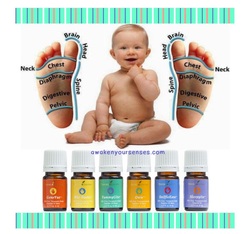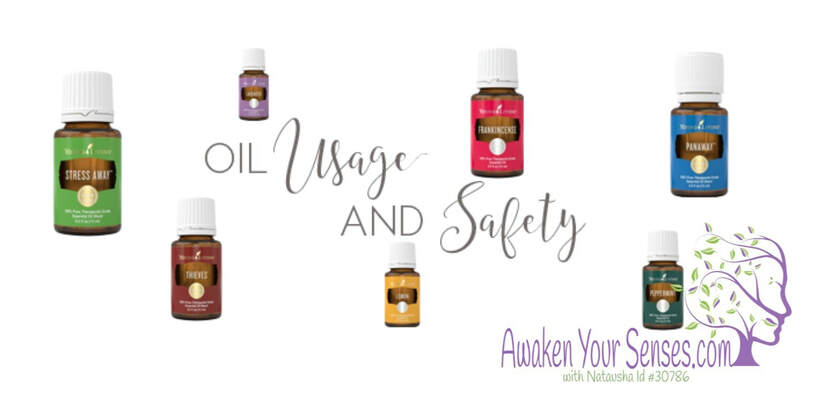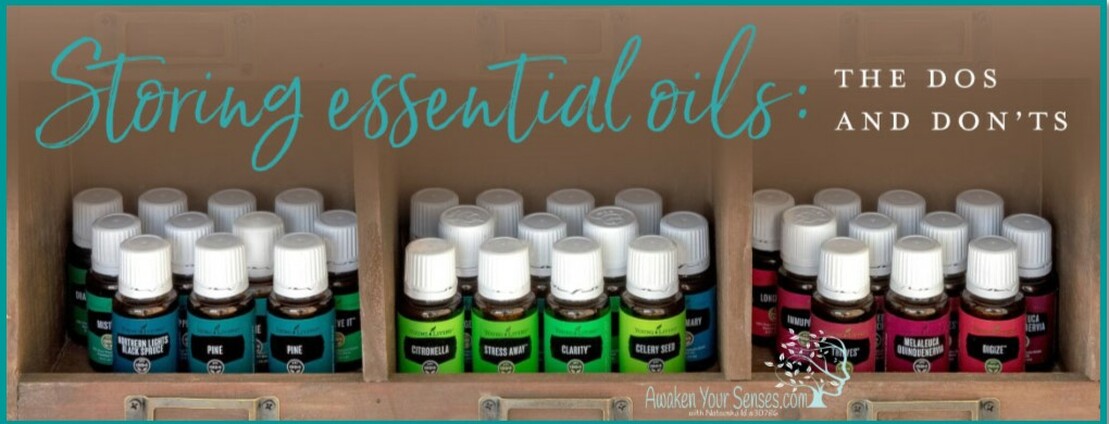Essential oils safety guide
Essential oils are potent gifts from nature that can often be more powerful than expected. In order to prevent misuse of these precious oils and ensure their maximum benefit, Young Living Founder and CEO D. Gary Young, working with Director of Global Education and Health Sciences Dr. Lindsey Elmore and other product experts on her team, has created this helpful safety guide. Refer to it to learn the basics of essential oil use, how to handle skin sensitivity, and other valuable information.

Usage FAQs
1. I’m new to essential oils. How are they used? – Each bottle of Young Living essential oil is labeled with directions for how that oil can be used, and these directions vary based on location. Please consult with the product label for appropriate use directions.
2. I see the term “carrier oil” used in several places. What is a carrier oil, what does it do, and why should I use it? – A carrier oil is a vegetable oil such as coconut oil or grapeseed oil that can be used to dilute EO. YL V-6 Vegetable Oil Complex is an excellent carrier oil for all applications. Carrier oils ensure that EOs applied topically are comfortable. Dilution with a carrier oil does not dilute the effect of the EO, and prevents waste due to excessive application. Vegetable shortening, butter, margarine or petroleum derivatives (petrolatum jelly) should never be used as carrier oils. Some consumers choose to avoid olive oil as a carrier oil because of its strong aroma and thick viscosity.
1. I’m new to essential oils. How are they used? – Each bottle of Young Living essential oil is labeled with directions for how that oil can be used, and these directions vary based on location. Please consult with the product label for appropriate use directions.
2. I see the term “carrier oil” used in several places. What is a carrier oil, what does it do, and why should I use it? – A carrier oil is a vegetable oil such as coconut oil or grapeseed oil that can be used to dilute EO. YL V-6 Vegetable Oil Complex is an excellent carrier oil for all applications. Carrier oils ensure that EOs applied topically are comfortable. Dilution with a carrier oil does not dilute the effect of the EO, and prevents waste due to excessive application. Vegetable shortening, butter, margarine or petroleum derivatives (petrolatum jelly) should never be used as carrier oils. Some consumers choose to avoid olive oil as a carrier oil because of its strong aroma and thick viscosity.
3. What is a hot oil? – “Hot oils” are oils that, when applied to the skin, can cause a hot or burning sensation. YL recommends using a patch test procedure prior to first use. To perform a patch test, apply 1-2 drops of EO to a patch of skin such as the forearm. Observe that area of skin over the course of 1-2 hours for any noticeable reaction; usually reactions occur within 5-10 minutes. If you experience a hot or burning sensation or if you develop a rash, add V-6 carrier oil to the affected area as often as needed. Examples of “hot” oils include cinnamon, clove, lemongrass, peppermint, oregano, thyme, Exodus II, and Thieves.
4. What if I experience skin discomfort or irritation? – If discomfort or irritation occurs, stop using the EO, and apply V-6 or other carrier oil to the affected area. Never use water in an attempt to flush the oil off the skin, as this may increase discomfort. If a rash occurs this may be a sign of detoxification; drink adequate water to encourage the release and removal of body toxins. Toxins present in petrochemical based soaps and skin care products, detergents and perfumes may trigger some of the detoxification reactions. Consider discontinuation of these agents if a reaction occurs. Before using the EO again, perform a patch test (see above) and dilute with carrier oil as needed. Water drives oil into the skin and the eyes. If EO gets in your eye, flush with V-6 carrier oil to alleviate any discomfort. Discomfort should be alleviated within minutes. If eye discomfort does not subside within 5 minutes, please seek medical attention. Be aware that some documents suggest diluting the oil with water. YL suggests that you dilute with carrier oil to ensure that discomfort is alleviated as quickly as possible.
5. Can essential oils be applied to sensitive areas? – YL recommends that you avoid contact with EOs and sensitive areas such as eyes, ears, genitals and mucous membranes. If you choose to use the oil in any sensitive area, dilute 1 drop of the essential oil to 5-10 drops of V-6 carrier oil.
4. What if I experience skin discomfort or irritation? – If discomfort or irritation occurs, stop using the EO, and apply V-6 or other carrier oil to the affected area. Never use water in an attempt to flush the oil off the skin, as this may increase discomfort. If a rash occurs this may be a sign of detoxification; drink adequate water to encourage the release and removal of body toxins. Toxins present in petrochemical based soaps and skin care products, detergents and perfumes may trigger some of the detoxification reactions. Consider discontinuation of these agents if a reaction occurs. Before using the EO again, perform a patch test (see above) and dilute with carrier oil as needed. Water drives oil into the skin and the eyes. If EO gets in your eye, flush with V-6 carrier oil to alleviate any discomfort. Discomfort should be alleviated within minutes. If eye discomfort does not subside within 5 minutes, please seek medical attention. Be aware that some documents suggest diluting the oil with water. YL suggests that you dilute with carrier oil to ensure that discomfort is alleviated as quickly as possible.
5. Can essential oils be applied to sensitive areas? – YL recommends that you avoid contact with EOs and sensitive areas such as eyes, ears, genitals and mucous membranes. If you choose to use the oil in any sensitive area, dilute 1 drop of the essential oil to 5-10 drops of V-6 carrier oil.

. How often can essential oils be applied? How much do I use? – Proper usage is indicated on each EO label. Please follow label instructions. The idea of “if a little is good, a lot is better” is not always correct. Essential oils are very potent and powerful– start low and go slow. In most cases 1-2 drops are adequate and using more may waste product. Depending on the EO you can gradually build up to 3-4 uses per day if desired. Excessive use of essential oils may increase the risk for adverse reactions.
7. Can essential oils be used during pregnancy or while nursing? – As with any medical condition it is strongly recommended that, prior to use of essential oils, you seek the advice and recommendation of a competent, trained health care advisor who is experienced in EO usage. It is generally recommended to avoid overuse and excessive use of Clary Sage (Salvia sclarea), Sage (Salvia officinalis), Tansy (Tanacetum vulgare), Hyssop (Hyssopus officinalis), Fennel (Foeniculum vulgare), and Wintergreen (Gaultheria procumbens) as well as the blends and supplements that contain these oils.
8. Can essential oils be used on children? – Many EOs are appropriate for use with children, and they should be diluted prior to use. Some YL products are pre-diluted with carrier oil as indicated on product label and are intended for direct application on children. Children generally respond well to EO, and use of a carrier oil is recommended. One-2 drops of EO such as SleepyIze, RutaVala, Gentle Baby and Peace & Calming may be diluted in carrier oil and applied to the bottom of the feet.
7. Can essential oils be used during pregnancy or while nursing? – As with any medical condition it is strongly recommended that, prior to use of essential oils, you seek the advice and recommendation of a competent, trained health care advisor who is experienced in EO usage. It is generally recommended to avoid overuse and excessive use of Clary Sage (Salvia sclarea), Sage (Salvia officinalis), Tansy (Tanacetum vulgare), Hyssop (Hyssopus officinalis), Fennel (Foeniculum vulgare), and Wintergreen (Gaultheria procumbens) as well as the blends and supplements that contain these oils.
8. Can essential oils be used on children? – Many EOs are appropriate for use with children, and they should be diluted prior to use. Some YL products are pre-diluted with carrier oil as indicated on product label and are intended for direct application on children. Children generally respond well to EO, and use of a carrier oil is recommended. One-2 drops of EO such as SleepyIze, RutaVala, Gentle Baby and Peace & Calming may be diluted in carrier oil and applied to the bottom of the feet.

9. How does exposure to sun affect essential oil use? – Some EOs, especially citrus oils, contain natural molecules that react with sunlight (UV light) and cause a sensitivity reaction. All YL EOs and oil blends that contain these compounds are labeled with a warning to avoid sun/UV light for 12 to 48 hours after applying. Caution should always be used when starting to use a new oil: use patch testing (see above), dilute and apply the oil to skin that is protected from sun/UV exposure to reduce the risk of sensitivity. YL beauty and cosmetic products are formulated to remove sun-sensitizing agents to reduce the risk of sun sensitivity.
10. What about the use of essential oils if I have a medical condition? Can essential oils interact with prescription medications? – If you have a disease or medical condition, or if you are using a prescription medication, it is recommended that you consult with a health advisor who has experience with EOs prior to using an EO. Seek the advice of the prescribing physician and a pharmacist about potential interactions between the medication(s) and the essential oil(s).
For more information visit www.youngliving.com
10. What about the use of essential oils if I have a medical condition? Can essential oils interact with prescription medications? – If you have a disease or medical condition, or if you are using a prescription medication, it is recommended that you consult with a health advisor who has experience with EOs prior to using an EO. Seek the advice of the prescribing physician and a pharmacist about potential interactions between the medication(s) and the essential oil(s).
For more information visit www.youngliving.com
Storing essential oils: The dos and don’ts
Essential oils are an investment in your health and well-being. Learning the dos and don’ts of storing them is just one important way to protect your wellness investment and maximize their benefits.
Dos and don’ts: How do you store essential oils?
Do keep the bottle lids on tight.
A tight lid prevents oxidation, air, or water from getting inside the bottle.
Less contact with air allows the oil to retain its properties. Frequent and prolonged exposure to air can alter consistency, smell, and properties of the oil.
Closing lids tightly also stops oil from evaporating.
YL tip: The plastic fitment on the bottle, which allows the oil to escape one drop at a time, also helps keep air and water out. Be sure to leave it on the bottle!
Don’t bring the heat or sunlight.
Too much heat or sunlight can impact the quality of the oil.
Both heat and sunlight can change the chemical composition of the oil.
Too much heat can cause the oil to evaporate more quickly, making it less effective.
Too much sun can deteriorate the oil.
YL tip: Keep essential oils in a closet or drawer and avoid leaving them in your car. A good rule of thumb is to keep oils in a cool, dark place.
Do care for them on the go.
If you’re anything like us, you keep your favorite oils on hand wherever you go—your car, your gym bag, your desk, and your purse. Any time is the right time for using your faves! The good news is you can preserve your oils and store them safely while traveling with a carrying case made just for your essential oils. Carry 7, 10, or even 30 oils with you wherever you go!
Don’t be afraid to make a statement.
You love your oils and you’re not afraid to show it! Display them in your home with a stylish shelving unit along with a potted plant or other chic decor element. Be sure the display doesn’t get frequent or prolonged sunlight, then let your oils take center stage!
Do get your questions answered.
Have questions about storing your oils, keeping the quality consistent over time, and getting the most out of each little bottle? Here are some frequently asked questions:
1. Can you keep essential oils in the fridge?
Some EO lovers swear by putting their oils in the fridge. It isn’t so much the lower temperature that matters—oils do not need to be kept that cold—but the consistent climate. Your fridge stays the same temperature day and night, which helps preserve the oil. Be sure to remove the oil about 12 hours before use so it can return to room temperature.
2. Can essential oils be stored in plastic bottles?
Essential oils are incredibly potent, which means that many oils will dissolve plastic. For this reason, we always keep our oils in glass bottles. Keep this in mind when you make your own EO concoctions like this DIY mermaid hair spray!
3. Do essential oils need dark bottles?
You’ll notice that all Young Living essential oils come in amber bottles. That’s to protect them from light that can alter their delicate composition. We recommend always storing your essential oils in dark bottles to preserve their quality.
4. Is it okay to freeze essential oils?
Though the fridge is fine, the freezer isn’t a great place for your oils. Just as you want to avoid extremely hot temperatures, you also want to keep your essential oils away from extreme cold.
Essential oils are an investment in your health and well-being. Learning the dos and don’ts of storing them is just one important way to protect your wellness investment and maximize their benefits.
Dos and don’ts: How do you store essential oils?
Do keep the bottle lids on tight.
A tight lid prevents oxidation, air, or water from getting inside the bottle.
Less contact with air allows the oil to retain its properties. Frequent and prolonged exposure to air can alter consistency, smell, and properties of the oil.
Closing lids tightly also stops oil from evaporating.
YL tip: The plastic fitment on the bottle, which allows the oil to escape one drop at a time, also helps keep air and water out. Be sure to leave it on the bottle!
Don’t bring the heat or sunlight.
Too much heat or sunlight can impact the quality of the oil.
Both heat and sunlight can change the chemical composition of the oil.
Too much heat can cause the oil to evaporate more quickly, making it less effective.
Too much sun can deteriorate the oil.
YL tip: Keep essential oils in a closet or drawer and avoid leaving them in your car. A good rule of thumb is to keep oils in a cool, dark place.
Do care for them on the go.
If you’re anything like us, you keep your favorite oils on hand wherever you go—your car, your gym bag, your desk, and your purse. Any time is the right time for using your faves! The good news is you can preserve your oils and store them safely while traveling with a carrying case made just for your essential oils. Carry 7, 10, or even 30 oils with you wherever you go!
Don’t be afraid to make a statement.
You love your oils and you’re not afraid to show it! Display them in your home with a stylish shelving unit along with a potted plant or other chic decor element. Be sure the display doesn’t get frequent or prolonged sunlight, then let your oils take center stage!
Do get your questions answered.
Have questions about storing your oils, keeping the quality consistent over time, and getting the most out of each little bottle? Here are some frequently asked questions:
1. Can you keep essential oils in the fridge?
Some EO lovers swear by putting their oils in the fridge. It isn’t so much the lower temperature that matters—oils do not need to be kept that cold—but the consistent climate. Your fridge stays the same temperature day and night, which helps preserve the oil. Be sure to remove the oil about 12 hours before use so it can return to room temperature.
2. Can essential oils be stored in plastic bottles?
Essential oils are incredibly potent, which means that many oils will dissolve plastic. For this reason, we always keep our oils in glass bottles. Keep this in mind when you make your own EO concoctions like this DIY mermaid hair spray!
3. Do essential oils need dark bottles?
You’ll notice that all Young Living essential oils come in amber bottles. That’s to protect them from light that can alter their delicate composition. We recommend always storing your essential oils in dark bottles to preserve their quality.
4. Is it okay to freeze essential oils?
Though the fridge is fine, the freezer isn’t a great place for your oils. Just as you want to avoid extremely hot temperatures, you also want to keep your essential oils away from extreme cold.


